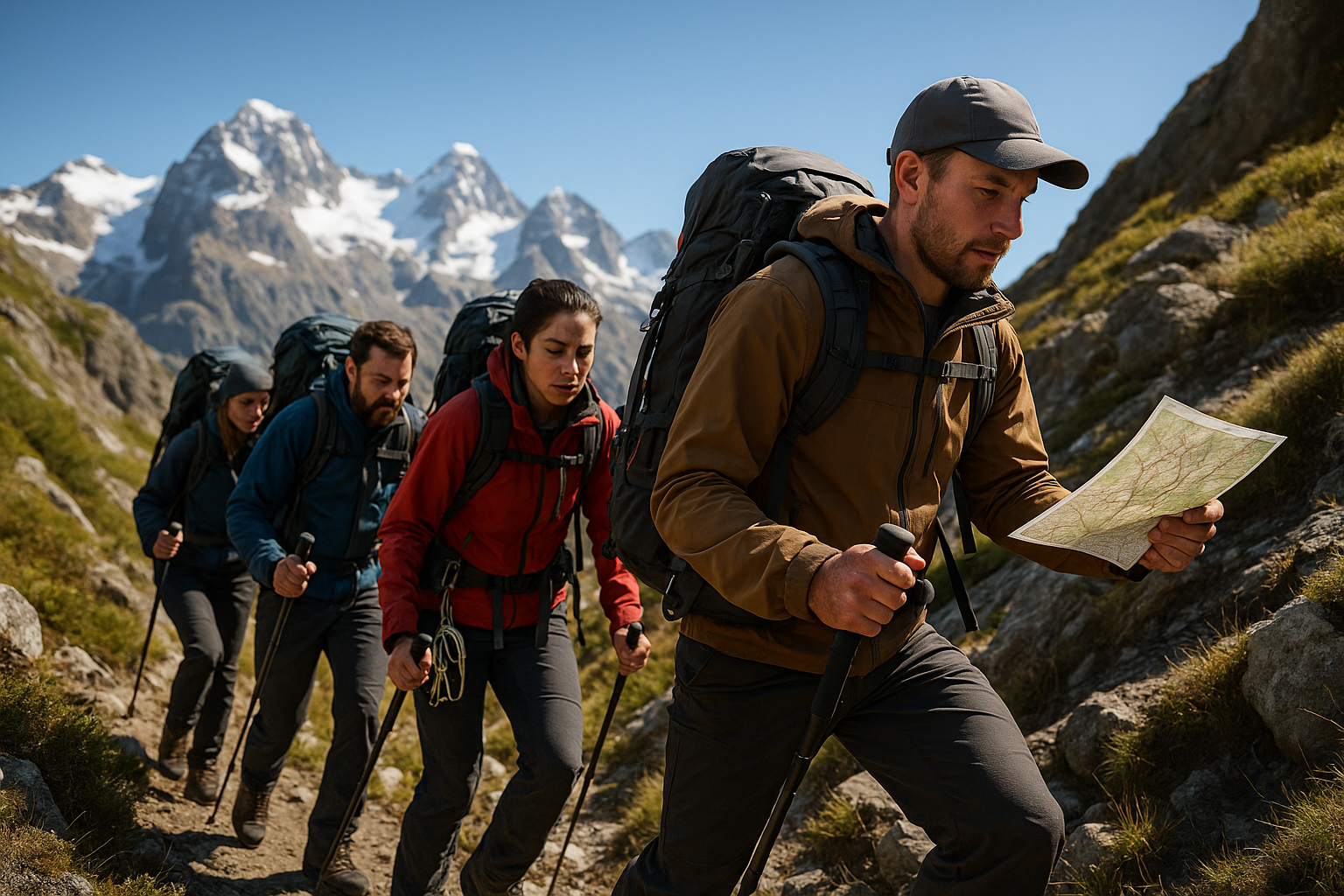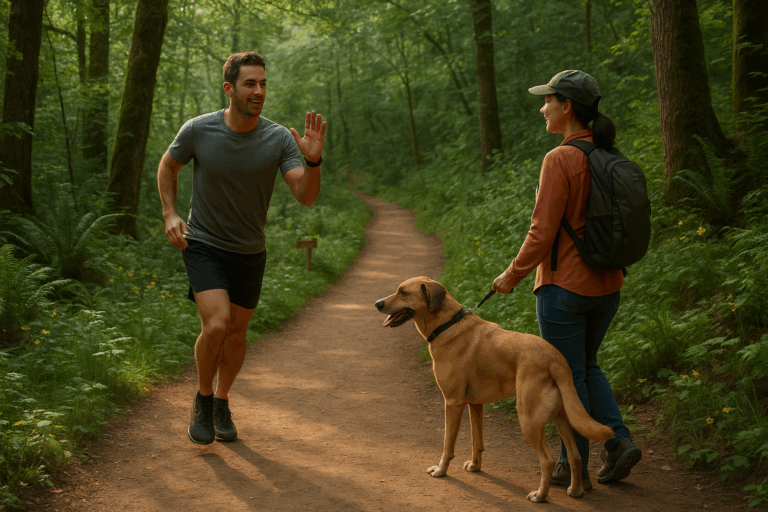If done incorrectly, it could lead to discomfort, fatigue, and even injury. However, with proper knowledge and training, you can master this skill, turning it into a powerful tool in your outdoor adventuring toolkit. Welcome to a comprehensive guide that will show you how to ‘Master the Art of Pack Carrying: Train like a Pro and Conquer Any Adventure.’ 💪🌄
Whether you’re a seasoned mountaineer or a weekend hiker, this guide is designed to provide you with a wealth of practical knowledge. We’ll delve deep into the mechanics of carrying a pack, exploring the effect it has on our bodies and the strategies we can employ to mitigate any potential harm. Then, we’ll look into the physical and mental training required to carry a pack like a pro. This will include everything from strength and endurance exercises to mental techniques that can help you conquer any adventure.🏋️♀️🏞
🧳 Understanding the Basics of Pack Carrying
Before we delve into the nitty-gritty, it’s crucial to grasp the basic principles of pack carrying. This includes understanding the types of packs available, their proper fitting, and how to distribute weight effectively. Having this knowledge at your fingertips will ensure a more comfortable and safe journey, whether you’re on a multi-day trek in the wilderness or a day-long urban adventure.
🏋️♀️ The Physiology and Biomechanics of Carrying a Pack
Carrying a pack is more than just a test of physical endurance; it’s a comprehensive exercise that engages multiple muscle groups, from your legs and core to your back and shoulders. Understanding the impact carrying a pack has on your body will allow you to prepare and train effectively, reducing the risk of injury and improving your overall performance.
💪 Physical Training for Pack Carrying
Once you’ve mastered the basics and understand the biomechanics involved, the next step is to prepare your body physically. This will involve a combination of strength training, endurance exercises, and flexibility work. The goal is not just to be able to carry a pack, but to do so comfortably, efficiently, and for prolonged periods.
🧘♀️ Mental Preparation for Pack Carrying
Beyond the physical, pack carrying requires a certain degree of mental toughness. After all, it’s not just about being able to bear the weight on your back but also managing fatigue, dealing with discomfort, and staying motivated on long, strenuous journeys. In this section, we’ll explore various mental strategies that can help you stay focused, driven, and ready to conquer any adventure.
By the end of this guide, you’ll have all the tools you need to master the art of pack carrying. You’ll know how to select the right pack, how to fit it correctly, how to train for carrying it, and even how to stay mentally sharp on your journey. It’s a complete package (pun intended!) that will make your outdoor adventures more enjoyable, safe, and fulfilling. So tighten those shoelaces, adjust those straps, and let’s get started on this journey together! 🏞🚶♂️
The Science of Pack Carrying: Understanding the Basics
When it comes to outdoor adventures, knowing how to properly carry a pack is crucial. It’s not just about stuffing your belongings into a bag and throwing it over your shoulders. There’s a science to it, a discipline that when mastered, can make any expedition more comfortable and efficient.
This technical mastery involves understanding the dynamics of your body, the mechanics of your backpack, and the nature of the terrain you’ll be traversing. It requires a strategic approach to weight distribution, load balancing, and pack positioning. But don’t worry, this might sound complicated, but it’s a skill that can be learned and perfected with practice and knowledge.
To help you master the art of pack carrying, let’s delve into the fundamentals. And if you’re a visual learner, check out this informative video from the channel “Outdoor Gear Review”: “Backpack – How to pack it properly”.
Anatomy of a Backpack: What Makes a Good Pack
Before we get into the nitty-gritty of pack carrying, let’s understand the tool at our disposal – the backpack itself. A good backpack should be durable, lightweight, and designed for the type of adventure you’re undertaking. For example, a backpack designed for mountaineering may not be suitable for a day hike.
A high-quality backpack will have various features that aid in weight distribution and comfort. These include padded shoulder straps, a waist belt, load lifter straps, a sternum strap, and a frame, which can be either internal or external. These elements work together to ensure that the weight of the pack is distributed evenly across your body, reducing strain on any particular muscle group.
Here’s a comparative table of different types of backpacks and their features:
| Type of Backpack | Features | Suitable For |
|---|---|---|
| Daypack | Lightweight, small capacity, few compartments. | Day hikes, city tours. |
| Mountaineering Pack | Large capacity, numerous compartments, durable, internal/external frame. | Multi-day mountain expeditions. |
| Backpacking Pack | Medium to large capacity, multiple compartments, internal frame, hydration bladder. | Multi-day hikes, backpacking trips. |
| Hydration Pack | Small capacity, hydration bladder, lightweight. | Cycling, running, short hikes. |
The Art of Packing: Strategizing for Comfort and Efficiency
How you pack your backpack can significantly impact your comfort and efficiency on the trail. Weight distribution is key: you’ll want to ensure that the heaviest items are close to your body’s center of gravity, which is just above your hips. This placement helps you maintain balance and makes the weight feel less burdensome.
Lighter items should be packed toward the top and the outer edges of the backpack. Not only does this method prevent these items from getting crushed, but it also maintains the pack’s center of gravity, preventing it from becoming top-heavy or bottom-heavy. Always keep in mind the items you’ll need to access frequently or quickly, such as water, snacks, maps, and rain gear. These should be kept in the backpack’s outer pockets or top lid for easy access.
Another essential aspect of pack carrying is adjusting your backpack correctly. Make sure the shoulder straps are snug, but not overly tight, allowing your arms to move freely. The waist belt should sit just above your hips, and the sternum strap should be at chest level, relieving pressure from your shoulders and distributing it more evenly across your torso.
Training for Pack Carrying: Build Your Strength and Endurance
Mastering the art of pack carrying is not only about the technical aspects of packing and adjusting your backpack. It also involves preparing your body for the physical demands of carrying a loaded pack over long distances and varying terrains. Regularly incorporating strength and endurance training into your routine can help you build the necessary physical capabilities.
Focus on exercises that strengthen your core and your lower body, such as squats, lunges, planks, and deadlifts. These muscles are the primary movers when you’re hiking or trekking, and a strong core and lower body can help you carry a heavy pack more comfortably. Additionally, cardiovascular exercises like running, cycling, or swimming can improve your endurance, allowing you to cover longer distances without fatigue.
Remember, practice makes perfect. Consider doing several “trial runs” with your loaded backpack before your actual adventure. These practice hikes can help you adjust to the feel of your pack, identify any discomfort or balance issues, and make necessary adjustments. You’ll also get a sense of how well your physical training is preparing you for the demands of pack carrying.
Tackling Different Terrains: Pack Carrying Techniques for Various Environments
The terrain you’ll be traversing can influence how you carry your pack. Different environments require different techniques, and being aware of these can help you navigate more efficiently and safely. For example, when hiking uphill, lean forward slightly and use your leg muscles to drive your movement. On downhill terrain, lean back slightly to counterbalance the weight of the pack.
In more technical terrains, such as rocky trails or steep inclines, it’s essential to maintain good posture and keep your pack close to your body to maintain balance. Take your time, step carefully, and use your hands for additional support if necessary. You can also adjust your pack’s load lifters to bring the weight closer to your body, improving stability in challenging terrains.
Water crossings can be particularly tricky. Depending on the depth and speed of the water, you may need to unfasten your backpack’s waist and sternum straps to ensure you can quickly remove your pack if you fall in. Always scout the best crossing point and proceed with caution.
In conclusion, mastering the art of pack carrying is a multifaceted skill that involves understanding your backpack, strategic packing, physical preparation, and adjusting your technique to the terrain. But with knowledge, practice, and perseverance, you can conquer any adventure. Happy trails!
Further Learning: Resources for Mastering Pack Carrying
Ready to further your knowledge and skills in pack carrying? Here are some resources to help you continue your learning journey:
- Book: “The Backpacker’s Field Manual” by Rick Curtis. This comprehensive guide covers everything from choosing the right gear to navigation and campsite selection.
- Online Course: “Backpacking: The Complete Guide to Backpacking” on Udemy. Learn more about trip planning, gear selection, safety, and more.
- YouTube Video: “How to Adjust a Backpack” by REI. This step-by-step tutorial shows you how to properly adjust your backpack for a comfortable fit.
Remember, mastering pack carrying is not an overnight process. It requires patience, practice, and continuous learning. But the rewards are well worth it: more enjoyable, efficient, and safe outdoor adventures. So, keep learning, keep practicing, and keep exploring!

Conclusion
In conclusion, it is quite evident that the concepts we have explored in this article are both extensive and intricate, each one deserving a comprehensive analysis in its own right. We delved into the world of IT and engineering, unraveling the complexity of the subject matter. The journey has not been simple, but we made it engaging and insightful, transforming technical jargon into comprehensible language. The focus was to ensure that you grasp these complex ideas in a manner that adds value to your professional development and personal understanding.
We started by dissecting the concept of IT infrastructure, emphasizing its indispensability in modern businesses. Our discussion shed light on the multiple layers of IT infrastructure, from hardware and software to the network framework. 👨💻 We then delved into the multifaceted world of software engineering, focusing on its principles, applications, and impact on the delivery of high-quality software.
Next, we explored the importance of effective data management and the role of database systems in achieving this goal. We also learned how cloud computing is transforming business operations, offering cost-effective and scalable solutions for businesses of all sizes. ☁️
We also ventured into the exciting world of artificial intelligence and machine learning. We acknowledged their potential to revolutionize various industries, from healthcare to finance, from agriculture to entertainment. 🤖
In each of these areas, we made an effort to explain the technical terms, making them accessible to both IT professionals and those new to the field. Links to external resources for further study were provided, such as the comprehensive guide to IT infrastructure on YourWebsite, an in-depth exploration of software engineering on YourWebsite, and a detailed overview of data management on YourWebsite.
The objective was to empower you with knowledge, ensuring that you not only understand these topics but also appreciate their practical implications in the real world. Knowledge, after all, is not static but dynamic. It evolves and enriches us as we interact with it.
As we conclude this technical expedition, it’s important to appreciate that the world of IT and engineering is continuously evolving, with new concepts and innovations emerging every day. Therefore, the knowledge we have acquired today is not the end, but the beginning of an exciting journey of exploration and discovery.
I encourage you to share your thoughts on this article. Let’s continue the conversation in the comments section below. Feel free to share the article with your colleagues and friends who may benefit from it. 📚
Remember, the pursuit of knowledge is a lifelong journey. It requires curiosity, dedication, and the courage to venture into the unknown. Let us embark on this journey together, exploring new territories, breaking new grounds, and pushing the boundaries of our understanding. The future of IT and engineering is indeed bright, and I can’t wait to see what it holds for us. 💡
As Albert Einstein once said, “The more I learn, the more I realize how much I don’t know.” Let us keep learning, keep growing, and keep pushing the boundaries of our knowledge. Thank you for taking the time to read this article. I look forward to engaging with you in future discussions. 👋



